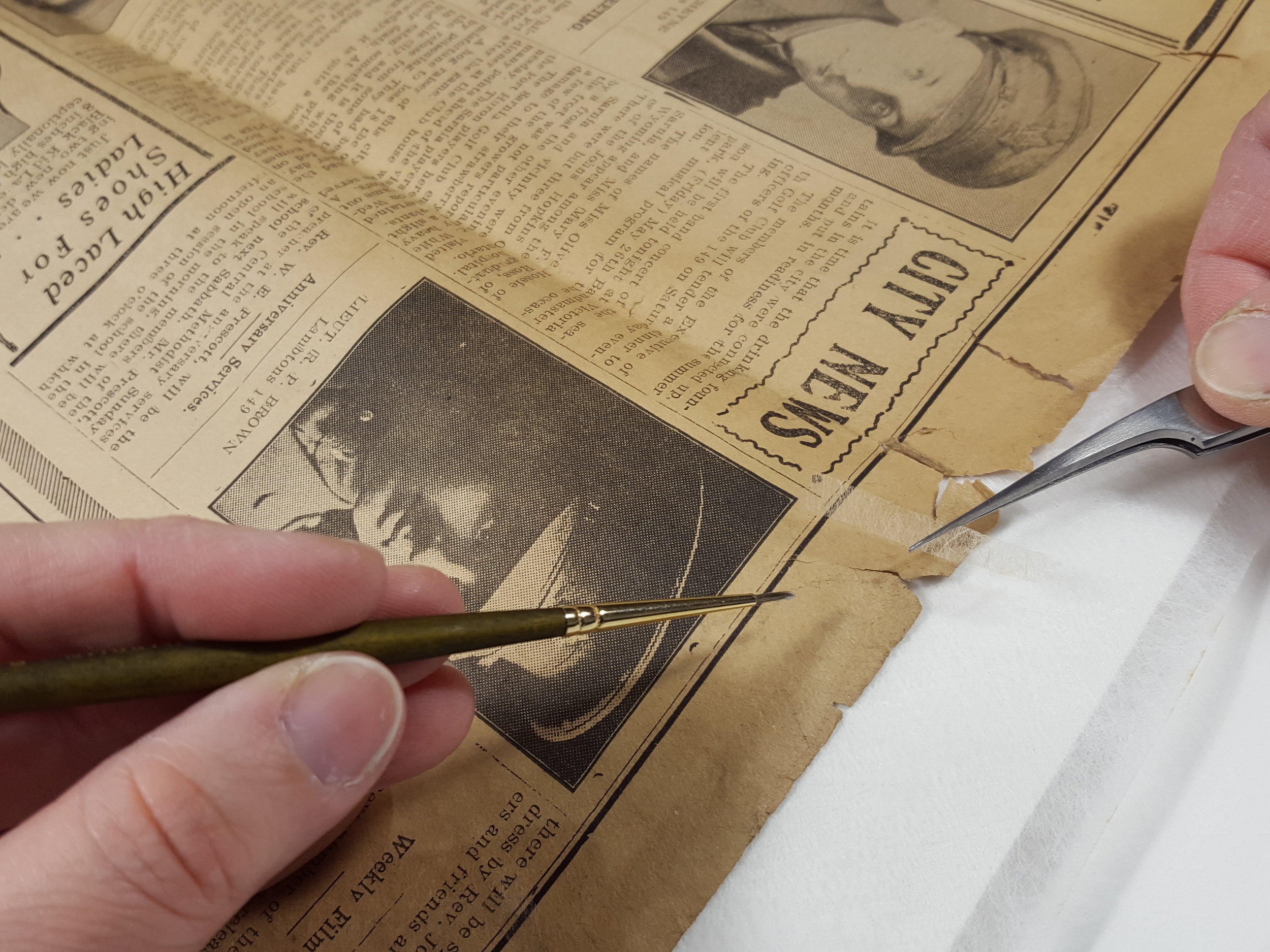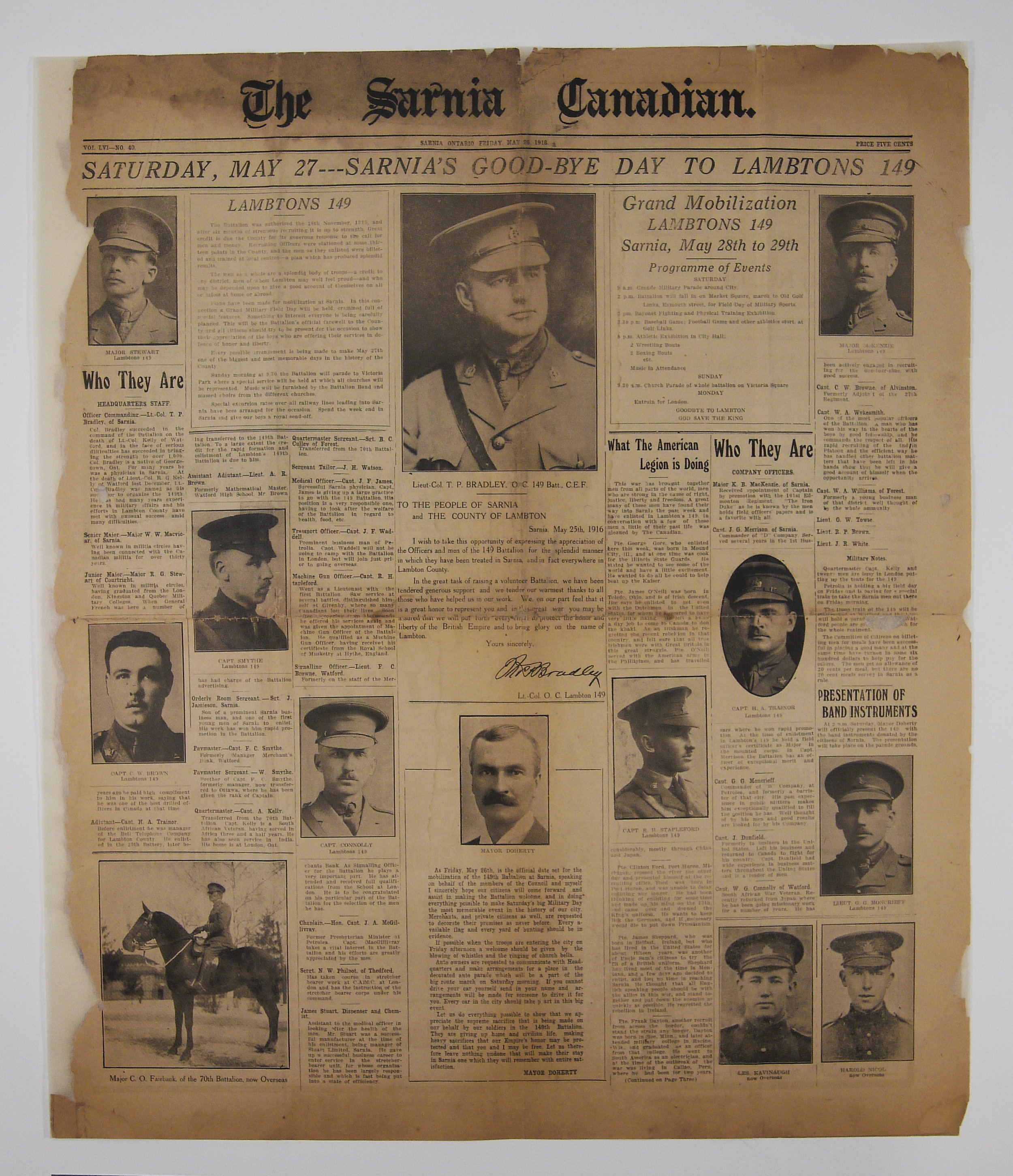Archival materials are valued for the information they convey, but often poor condition and deterioration hinders access to the text or images on old paper and documents. We frequently conserve these kinds of items for libraries and archives who's primary objective is to preserve and study the history they contain.
This 1916 newspaper was been creased and soiled when it came in to the studio.
This project recently came to our studio from the Lambton Heritage Museum in Grand Bend, Ontario, Canada. The 1916 Sarnia Canadian newspaper was part of their research collection, but had never received proper cataloguing or storage. It was the only known copy of this particular issue, and featured names and profiles of the soldiers in the 149 Battalion of the Canadian Expeditionary Forces (popularly known as "Lambton's Own") about to depart for battle in World War One.
Damage prevented access to the text of the newspaper.
A researcher using the Museum's collections wanted to read the content of the articles, but poor condition prevented access. The paper was soiled and creased, with folds obscuring text down the centre of paper, and the brittleness of the acidic newsprint had caused many breaks and losses in the sheet. Even gentle handling caused further deterioration, and conservation treatment was needed in order to restore the pages so they could be used safely.
Surface cleaning the paper to remove grime.
First, the front page was surface cleaned to remove the dirt and grime that was ground into the paper.
The creases gently unfolded, with the aid of moisture.
Next, the creases and folds were humidified with locally applied moisture and carefully unfolded, then flattened with a tacking iron, in order to open the sheets fully.
Tear repairs performed with extremely thin Japanese tissue.
Long tears along the creases and smaller ones radiating from the outer edges were repaired and strengthened with an extremely thin Japanese repair tissue, adhered with wheat starch paste. The thin tissue is almost transparent, a necessity in order for the text to remain readable through the repairs, and the adhesive is stable and reversible and won't become yellow or brittle with age.
The newspaper spread after repair and restoration.
Losses in the margins were filled with a slightly thicker Japanese paper to lend strength to the edges. Finally, the sheets were humidified overall and flattened so the paper is readable once more.
The front page of the conserved paper is now fully accessible.
The newspaper is now stable and able to be safely handled by Museum staff and visitors, and all the information is accessible to researchers. The stories of these brave men from Lambton County will once more be known and appreciated by today's citizens.
Lambton Heritage Museum plans to exhibit the restored newspaper in an upcoming exhibit telling the story of Lambton County's participation in WWI. It will be held at the Judith and Norman Alix Art Gallery in Sarnia, Ontario, in fall 2017, and is to run concurrently with the national traveling exhibition Witness: Fields of Battle Through Canadian Eyes, on loan from the Canadian War Museum in Ottawa. Book and Paper Conservation Services is pleased to have worked on this project and to have contributed to the exhibition in a small way.
If you have historic items you are interested in having preserved, don't hesitate to get in touch with us!















